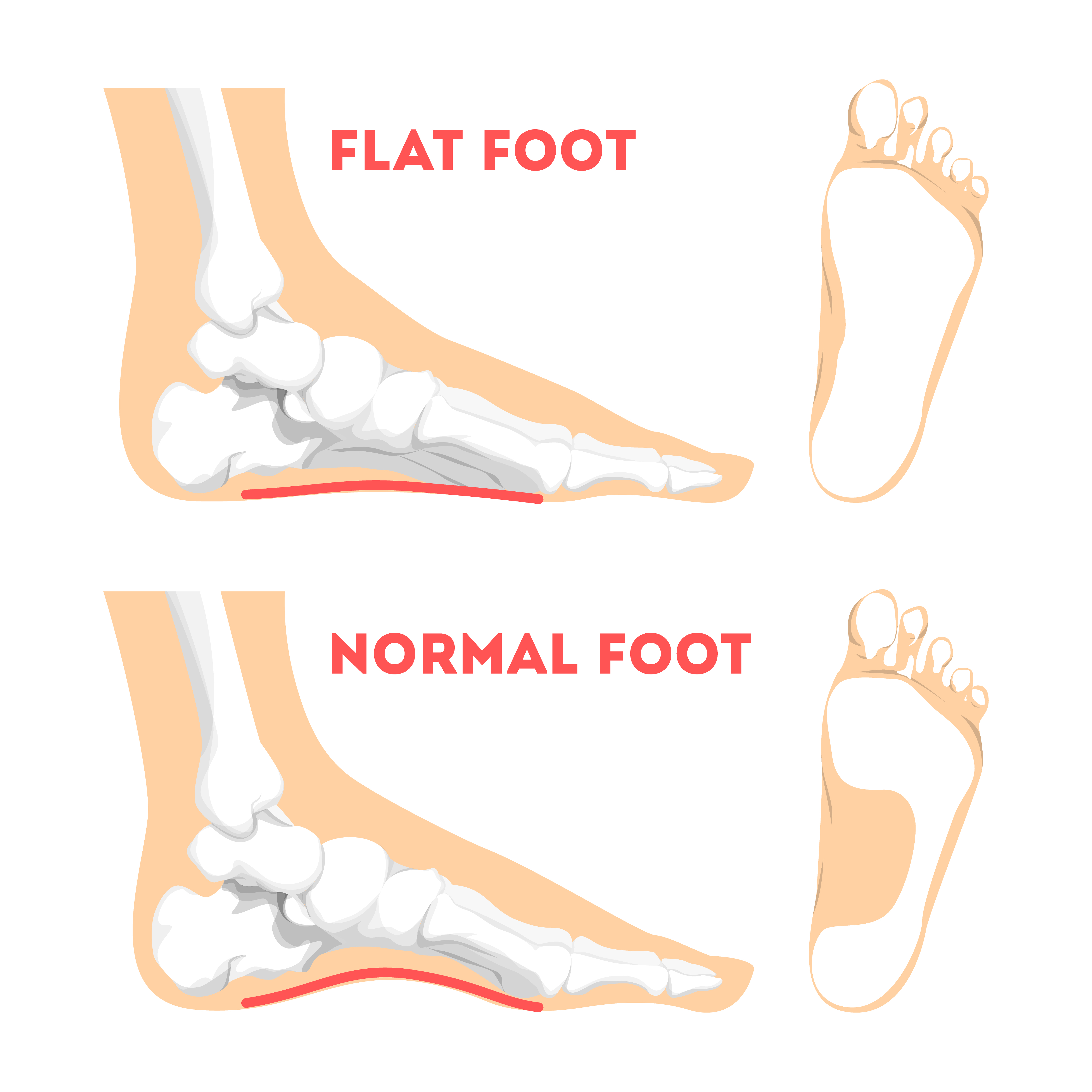Flat foot, also known as pes planus or fallen arches, is a condition where the arches of the foot are lower than normal or absent, causing the entire sole of the foot to come into contact with the ground when standing

Flat feet can develop due to a variety of factors, including:
Flat feet may not always cause symptoms, and some individuals with flat feet may not experience any problems. However, in other cases, flat feet can cause:
Diagnosis of flat feet is done through a physical examination. the arches of the feet, evaluate foot function will be assessed and imaging tests, such as X-rays or CT scans may be done to further assess the structure and alignment of the feet.
Treatment for flat feet depends on the severity of symptoms and associated conditions. Options may include: